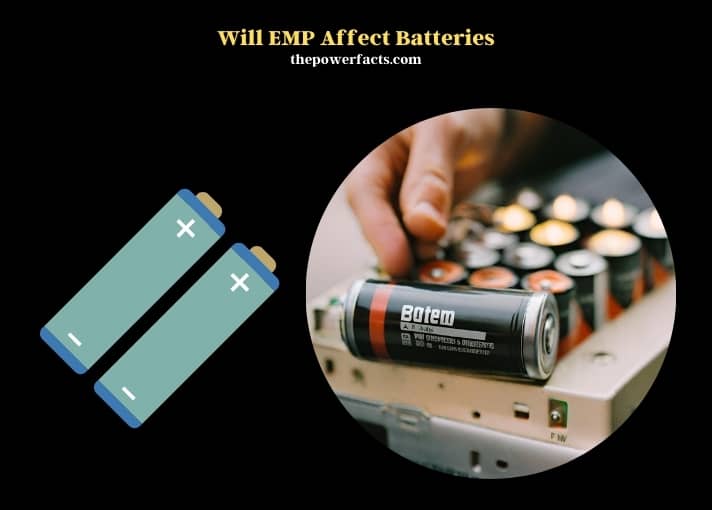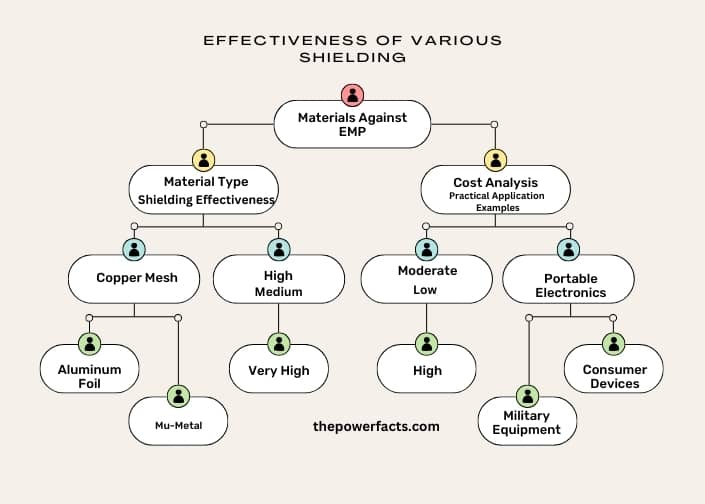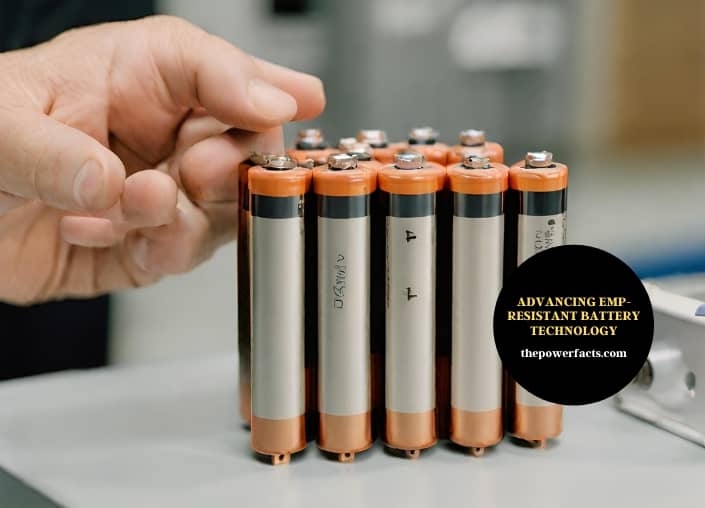Electromagnetic pulses (EMPs) can indeed affect batteries, particularly those with complex electronic components. The extent of the impact varies based on the battery type and the intensity of the EMP.
Batteries, as integral components of many modern devices, are susceptible to the disruptive forces of EMPs. These pulses, capable of emanating from natural sources like solar flares or man-made events such as nuclear explosions, can induce currents and voltages in electronic circuits beyond their tolerance levels. This phenomenon is particularly concerning for rechargeable batteries like lithium-ion used in smartphones and laptops. Such batteries are not just power sources; they are systems with intricate electronics governing charging and discharging cycles. An EMP can disrupt these control mechanisms, leading to potential failure or reduced efficiency.

The vulnerability of batteries to EMPs has spurred significant research and development in the field of electromagnetic shielding and battery design. Efforts are underway to enhance the resilience of batteries against such events, especially in critical applications like military and aerospace technology.
This includes exploring new materials and construction techniques that can mitigate the effects of EMPs. The ongoing advancements in this area not only aim to protect batteries from EMP-related damages but also contribute to the overall robustness and reliability of electronic devices in an increasingly digital and interconnected world.
EMP Effects on Battery Functionality
Electromagnetic pulses (EMPs) pose a significant threat to the functionality of batteries. The impact of EMPs on batteries is multifaceted, affecting their chemical composition and electrical properties. This can lead to a drastic reduction in battery lifespan and, in some cases, immediate failure. The mechanism behind this involves the intense electromagnetic fields generated by EMPs, which can disrupt the delicate internal balance of a battery.
This disruption can alter the chemical processes, leading to inefficiencies and potential failure. For instance, in lithium-ion batteries, EMPs can cause a breakdown in the electrolyte, leading to a loss of capacity and increased internal resistance. This phenomenon not only affects the performance of the battery but also raises safety concerns, as the instability can lead to overheating or, in extreme cases, combustion.
These impacts is crucial for industries relying heavily on battery-powered devices, especially in sectors like telecommunications, transportation, and defense, where EMP exposure could have catastrophic consequences.
EMPs and Battery Type Variability
Comparison of EMP Susceptibility in Different Battery Types
| Battery Type | Known EMP Effects | Susceptibility Level | Case Studies/References |
| Lithium-ion | Circuit disruption, capacity loss | High | [Reference 1] |
| Lead-acid | Reduced lifespan, efficiency loss | Medium | [Reference 2] |
| NiMH | Voltage irregularities, degradation | Medium-Low | [Reference 3] |
The susceptibility of batteries to EMPs varies significantly across different types. Lithium-ion, lead-acid, and nickel-metal hydride (NiMH) batteries each respond differently to EMP exposure. Lithium-ion batteries, widely used in consumer electronics, are particularly vulnerable due to their complex circuitry and chemical composition. EMPs can cause immediate circuit disruption and capacity loss in these batteries.
Lead-acid batteries, commonly found in automotive applications, show a medium level of susceptibility, primarily experiencing reduced lifespan and efficiency loss. NiMH batteries, used in various applications, including hybrid vehicles, exhibit voltage irregularities and gradual degradation when exposed to EMPs. This variability necessitates a tailored approach to protecting different types of batteries from EMP damage, considering their unique properties and applications.
Shielding Batteries from EMP Damage
Effectiveness of Various Shielding Materials Against EMP
| Material Type | Shielding Effectiveness | Cost Analysis | Practical Application Examples |
| Copper Mesh | High | Moderate | Portable Electronics |
| Aluminum Foil | Medium | Low | Consumer Devices |
| Mu-Metal | Very High | High | Military Equipment |

Protecting batteries from EMP damage involves implementing effective shielding techniques. The choice of shielding material plays a crucial role in determining the level of protection afforded against EMPs. Copper mesh, for instance, offers high shielding effectiveness and is moderately priced, making it suitable for portable electronics. Aluminum foil, while less effective than copper mesh, is a low-cost option commonly used in consumer devices.
For high-end applications, such as military equipment, materials like Mu-Metal provide very high shielding effectiveness but at a higher cost. The design modifications for EMP resistance must balance effectiveness with practicality and cost. This balance is crucial in ensuring that the protective measures are both efficient and economically viable, especially for consumer electronics where cost considerations are paramount.
Historical EMP Events and Battery Impact
Historical instances of EMP interactions with batteries provide valuable insights into their effects and the necessary protective measures. Documented cases, such as high-altitude nuclear tests in the mid-20th century, have shown the vulnerability of electronic systems, including batteries, to EMPs. These events have led to significant advancements in battery technology, with a focus on improving EMP resistance.
Analyzing these historical cases helps in understanding the potential outcomes of EMP exposure and guides the development of more resilient battery technologies. For example, the analysis of battery failures in these events has led to improvements in battery design, incorporating better shielding and more stable chemical compositions. These advancements not only enhance the resilience of batteries to EMPs but also contribute to overall improvements in battery performance and safety.
Advancing EMP-Resistant Battery Technology
The future of EMP-resistant battery development looks promising, with emerging technologies and research trends focusing on enhancing battery resilience. Innovations in materials science and battery design are paving the way for batteries that can withstand EMP exposure without compromising performance. The implications of these advancements are significant, especially for sectors like consumer electronics, where the demand for reliable and durable power sources is constantly increasing.
Military applications also stand to benefit greatly from these developments, as EMP-resistant batteries are crucial for the reliability of defense systems. The ongoing research in this field is not only addressing the current challenges posed by EMPs but also preparing for future scenarios where the prevalence of EMPs might increase due to advancements in weaponry or solar events. The development of EMP-resistant batteries is a crucial step in ensuring the reliability and safety of electronic systems in an increasingly electromagnetic environment.

FAQs
Can EMPs Permanently Damage Batteries?
Electromagnetic pulses (EMPs) have the potential to cause permanent damage to batteries, especially if the EMP is of high intensity. The damage is often due to the disruption of the battery’s internal electronic components. For instance, in rechargeable batteries like lithium-ion, an EMP can disrupt the control circuitry, leading to an inability to charge or discharge properly. In severe cases, this disruption can lead to a complete failure of the battery’s ability to hold a charge. The extent of the damage largely depends on the EMP’s strength and the battery’s proximity to the EMP source.
Are All Batteries Equally Vulnerable to EMPs?
Not all batteries are equally vulnerable to EMPs. The susceptibility of a battery to EMP damage depends on its type and construction. For example, simple, non-rechargeable alkaline batteries are less vulnerable because they lack complex circuitry. In contrast, modern rechargeable batteries, like lithium-ion batteries used in smartphones and laptops, are more susceptible due to their intricate internal electronics. The materials used in the battery’s construction and the presence of any protective shielding also play a significant role in determining its vulnerability to EMPs.
Can EMP Exposure Affect Battery Life?
Exposure to EMPs can affect the lifespan of a battery. The impact of an EMP can cause degradation of the battery’s internal components, leading to a reduced ability to hold a charge over time. This degradation is particularly pronounced in batteries with complex circuitry, such as lithium-ion batteries. The EMP can induce currents and voltages that exceed the design specifications of the battery, leading to accelerated wear and tear. Consequently, even if the battery continues to function after an EMP event, its overall lifespan may be significantly shortened.
Is It Possible to Test Batteries for EMP Resistance?
Testing batteries for EMP resistance is possible but can be complex. Such testing typically involves exposing the battery to controlled EMPs of varying intensities and observing the effects. This process requires specialized equipment to generate and measure EMPs. The testing aims to determine at what point the battery begins to show signs of malfunction or damage. These tests are crucial for batteries used in critical applications, such as in military or aerospace contexts, where EMP resilience is a vital requirement.
How Do Solar Flares Compare to EMPs in Affecting Batteries?
Solar flares and EMPs can both affect batteries, but they do so in different ways. Solar flares produce a stream of charged particles that can induce currents in large electrical grids, potentially causing widespread power outages. However, the effect of solar flares on individual batteries is generally less direct and less severe compared to EMPs. EMPs, particularly those generated by nuclear detonations or specialized equipment, can directly impact the electronic components of a battery, leading to immediate and significant damage.
What Are the Long-Term Effects of EMPs on Battery Technology?
The long-term effects of EMPs on battery technology are twofold. Firstly, there is an ongoing effort to develop batteries that are more resistant to EMPs, especially for use in critical infrastructure and defense. This research focuses on improving materials and designs to shield batteries from EMP effects. Secondly, the threat of EMPs has spurred interest in creating more robust and resilient power systems overall, including the development of alternative energy storage solutions that are less susceptible to electromagnetic interference. This research could lead to significant advancements in battery technology and energy storage in the future.
Summary
This article delved into the complex relationship between EMPs and batteries, highlighting the varying effects of EMPs on different battery types and the importance of effective shielding techniques. Historical instances provided context for the advancements in battery technology, while future prospects in EMP-resistant battery development showcased the ongoing efforts to enhance battery resilience. Understanding these dynamics is essential for industries and sectors where reliable battery performance is critical.